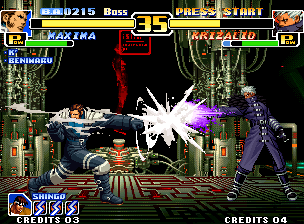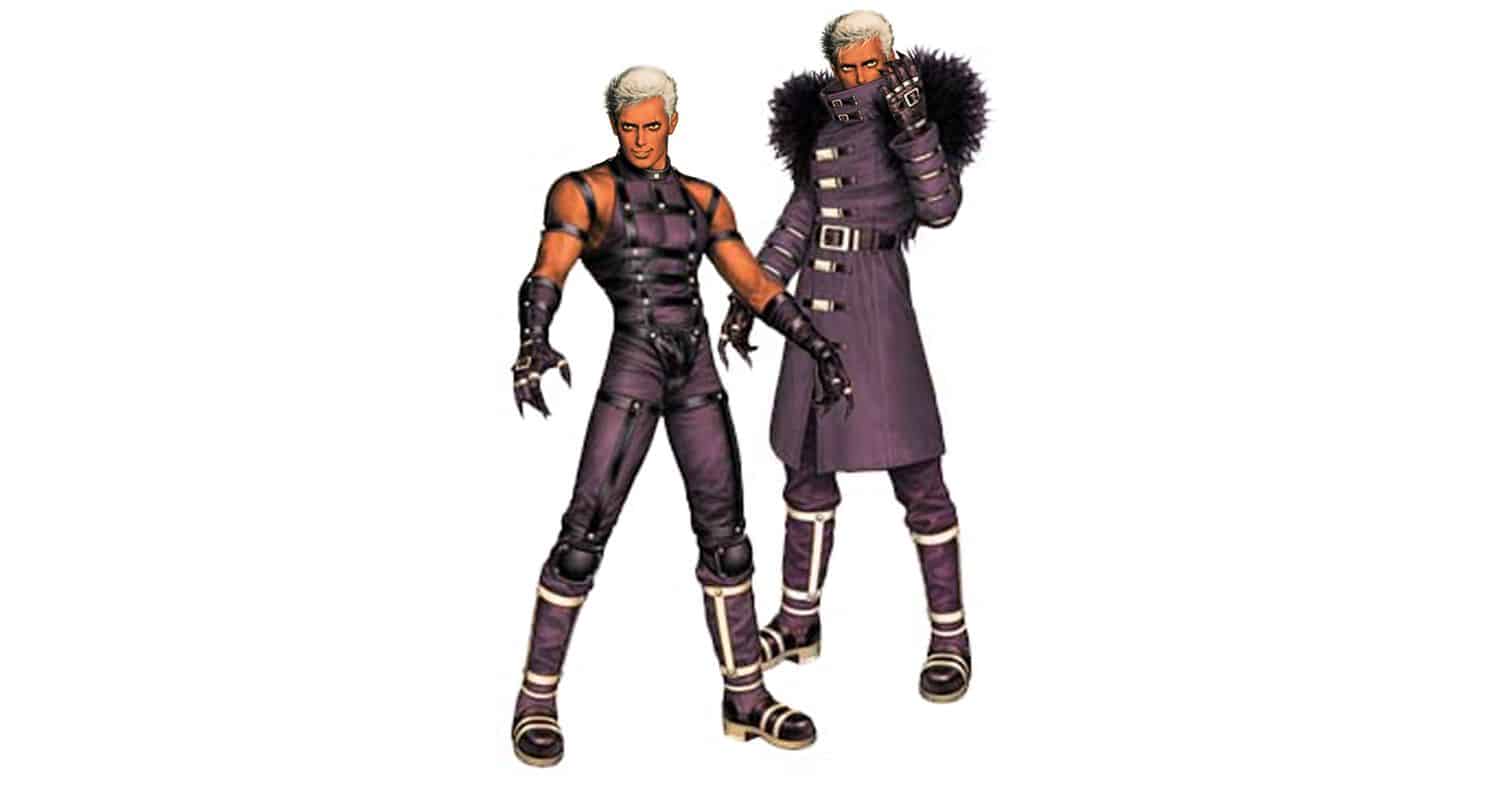

This arc is notable as the first to not be developed first for the arcades, with Playstation 4 serving as the lead platform for XIV. The game itself uses 3D graphics (through an inhouse engine in XIV and Unreal Engine 4 in XV) while still retaining its roots as a two-dimensional playing field, similar to games such as Street Fighter IV or Mortal Kombat 9. The Shun'ei Saga arc begins with The King of Fighters XIV and continues in XV, introducing Shun'ei, a student of Tung Fu Rue as the new protagonist, as well as finally the official addition of another one of SNK's fighting game juggernaut titles, Samurai Shodown, via their mascot/heroine Nakoruru.
#The king of fighters 99 single play series#
This is also where the series drops the yearly naming convention in favor of numbered sequels starting with XI. It also experienced a change of hardware platforms multiple times ('03 on Neo Geo as with all the previous games, XI on Atomiswave and XII and XIII on Taito Type X2) the first in-game Art Shift ever, and turmoil in the parent company, but managed to get on Steam in the end. It had Nona, Falcoon, Shinkiro's unnoficial "successor" Hiroaki and Eisuke Ogura as artists. The main enemy of this arc is a band of enigmatic people named "Those from the Past". The story involves a sinister plot to capture the powers of the Kusanagi, Yagami, and Kagura clans and use them to seize the sealed power of Orochi, as well as the question of just whose side Ash is on. XII is more a dream match and test run for the new engine they were developing), which introduces androgynous French pretty boy Ash Crimson as the new main character. The Tales of Ash arc ('03, XI and XIII.Though some consider the first two games their own arc, it is sometimes thrown together with the next arc. It is strongly associated with the artist Shinkiro, as were most of SNK's franchises of the time. The original King of Fighters arc (known alternatively as the Rugal Saga) ( '94- '95), which focuses on notorious crime lord Rugal Bernstein and his attempt to establish himself as the world's strongest fighter by staging a grand tournament and inviting contenders from all across the globe.There are currently five major story arcs: Not a surprise if you know what he's went through after the end of the Orochi Saga.The King of Fighters series started out as a crossover fighting game, featuring some of the most popular characters from SNK's fighting game franchises: Fatal Fury and Art of Fighting, as well as classic SNK games such as Ikari Warriors and Psycho Soldier, splitting them up into teams of three (four in the NESTS Saga), duking it out in one-on-one battles similar to its major competition at the time, Street Fighter.Īlthough the first game was merely intended to be a simple crossover and Spin-Off, the series became more popular than the other series that inspired it, and an overreaching plot soon developed that took the other SNK fighters along for the ride.

Symbolizing his departure of the role of the main hero of the series, here comes a track that invokes the iconic Esaka? from '96 but in way that seems nostalgic and longing for the good ol' days. The most drasticly changed in tone would arguably come from Kyo's '99 theme Tears. Gone are Team Psycho Soldier's idol-musiclike/chinese-influence tracks and in comes the aptly named Psycho Sonic Trip: Team Fatal Fury's new theme 176th Street feels more in place for a jazz cafe than a fighting game: IMO this track ultimately represented the tone SNK set for the NEST saga (at least before they went bankrupt). Music almost completely unknown in fighting games at that time. Instead of the funky or upbeat themes of Kyo's Team Japan, KD-0079 hits you with some hard-hitting music. IMO none of the later KoF entries ever took a more drastic turn musically than '99 did.įor example: Here is the theme for the new protagonist K' and his team of genetic supersoldiers and Team Japan transplants: The cheery and more diverse tracks of the Orochi Saga games are out and in their place are the harder club-like beats and moodier tracks of the first entry of the NEST Saga. Beyond it's visuals, presentation, and plot, nothing would probably represent this thematic shift more than its soundtrack. The King of Fighters series has gone through a lot of makeovers over the years but nothing has been more drastic than the darker and edgier turn the series went with '99.

I would argue '2000 is a close tie but I think first impressions matters a lot more than what is essentially a reiteration of a known successful formula. I still think that's true today so lets put that aside when I say The King of Fighters '99 also has a GOAT fighting game soundtrack. In the old forum, I posted a thread arguing that The King of Fighters '96 had the GOAT fighting game soundtrack on its 20th anniversary.


 0 kommentar(er)
0 kommentar(er)
